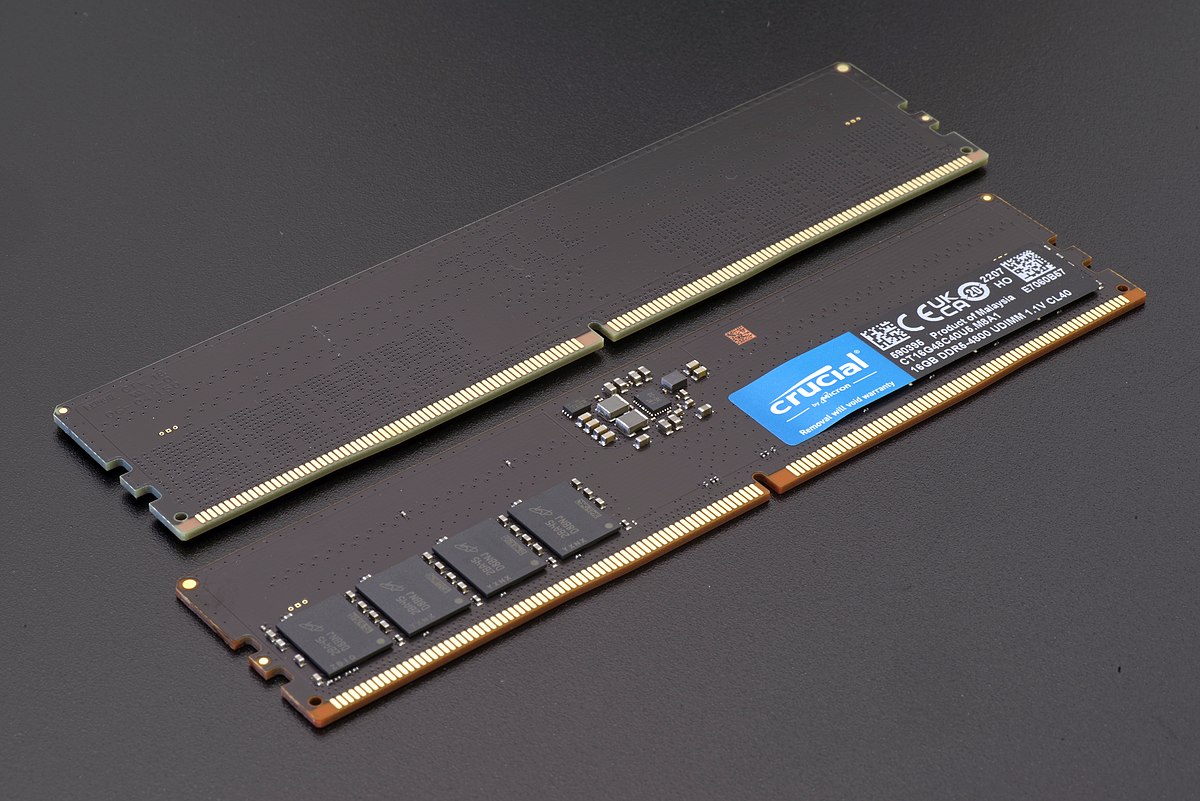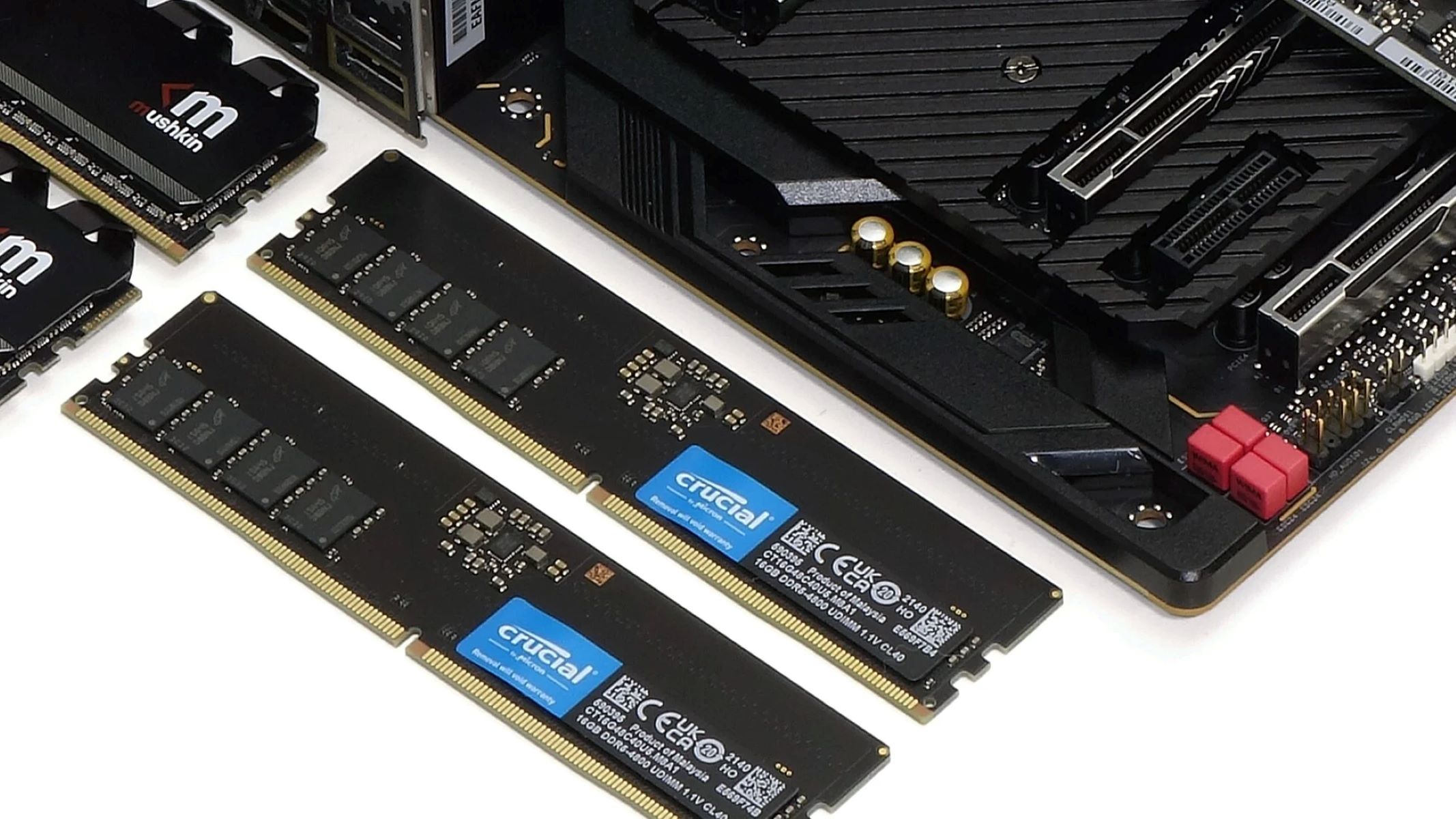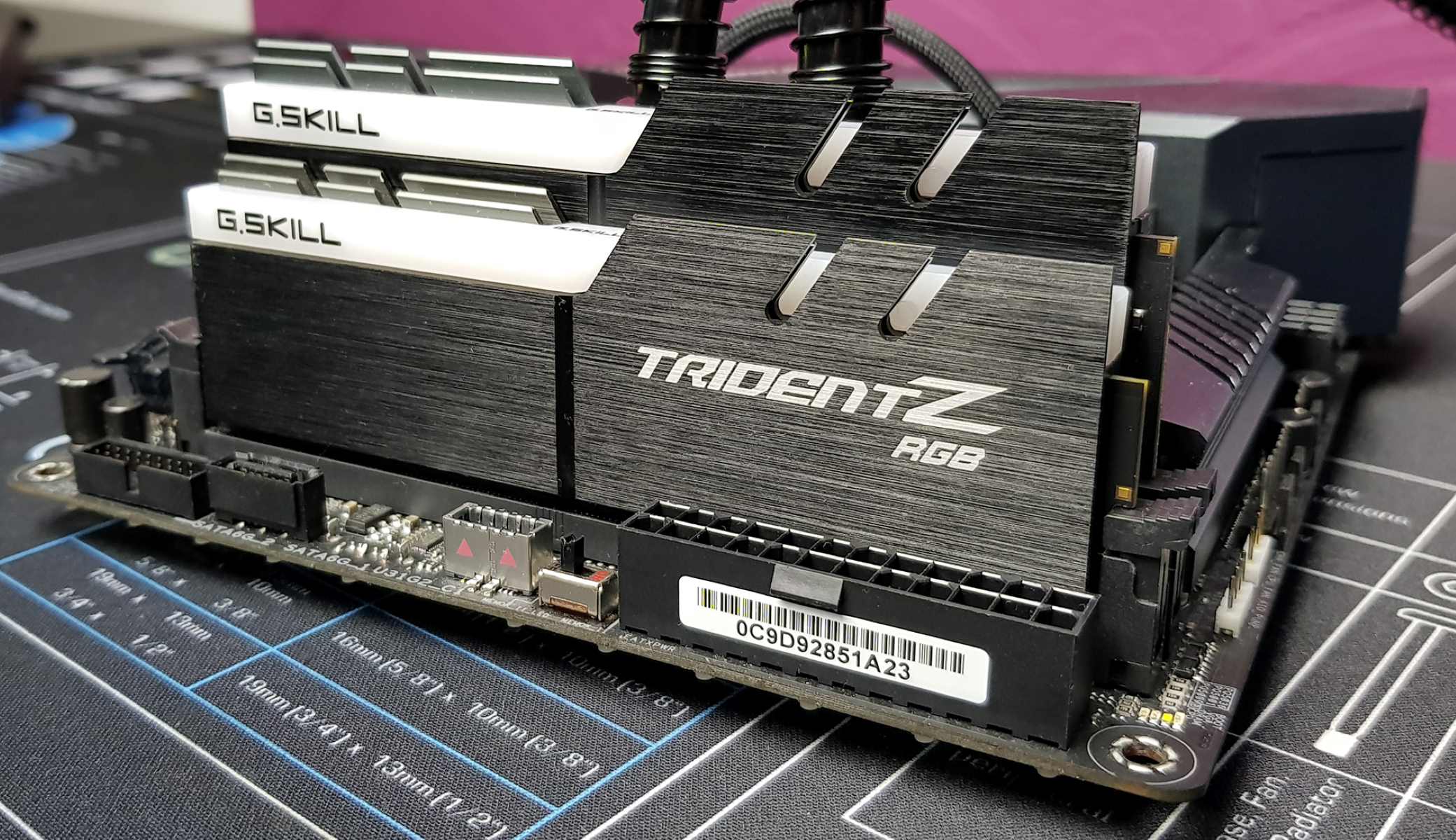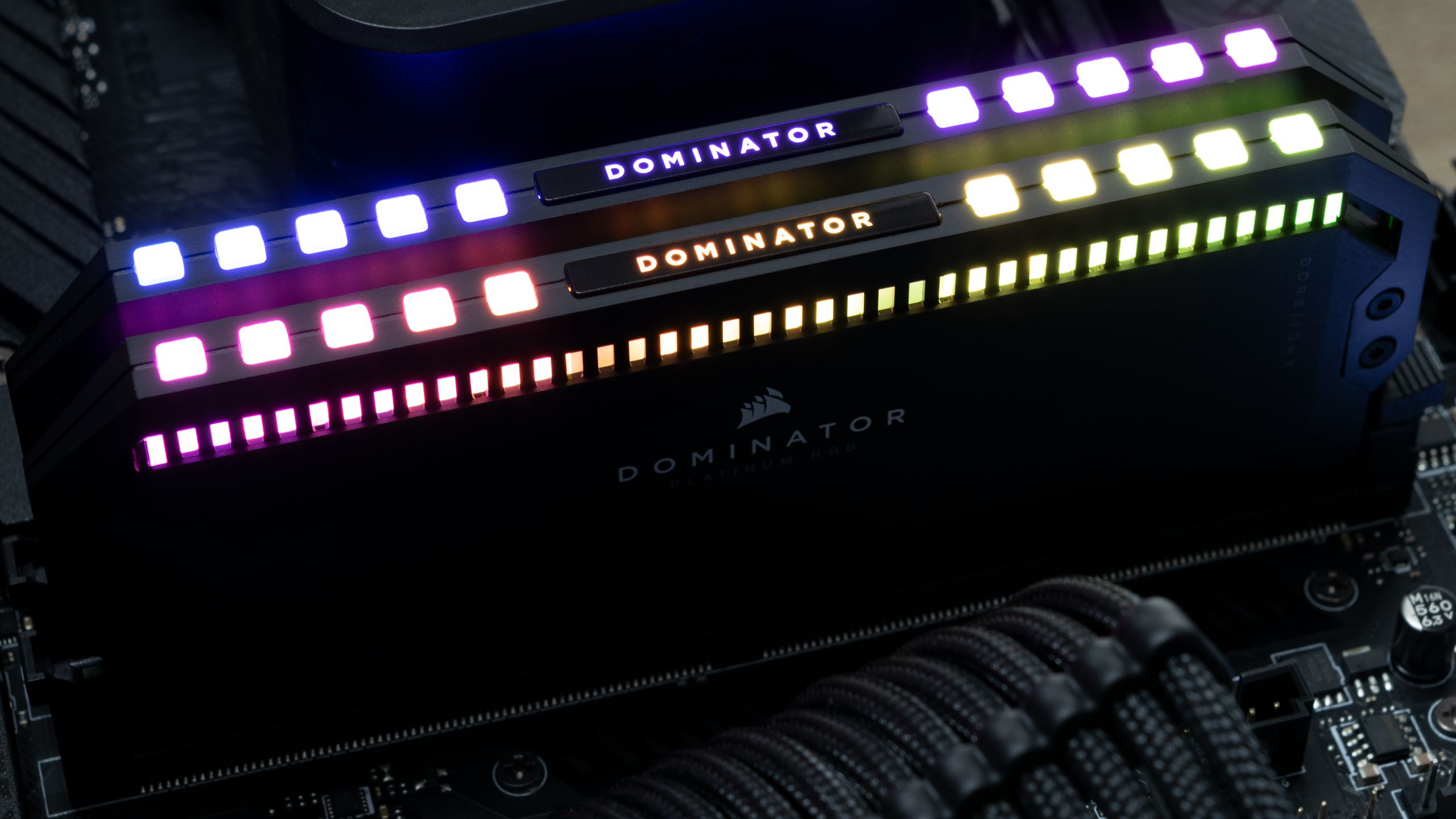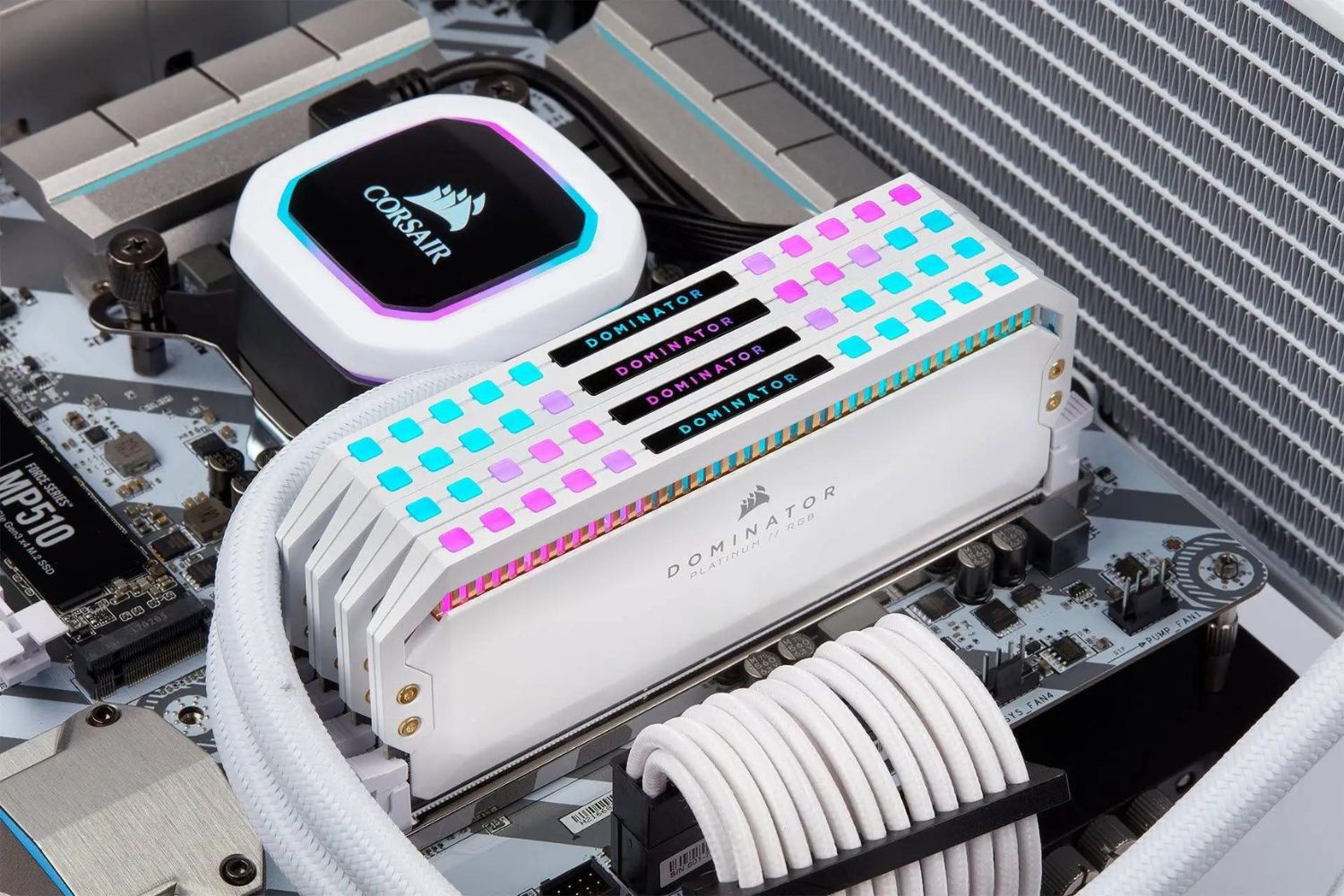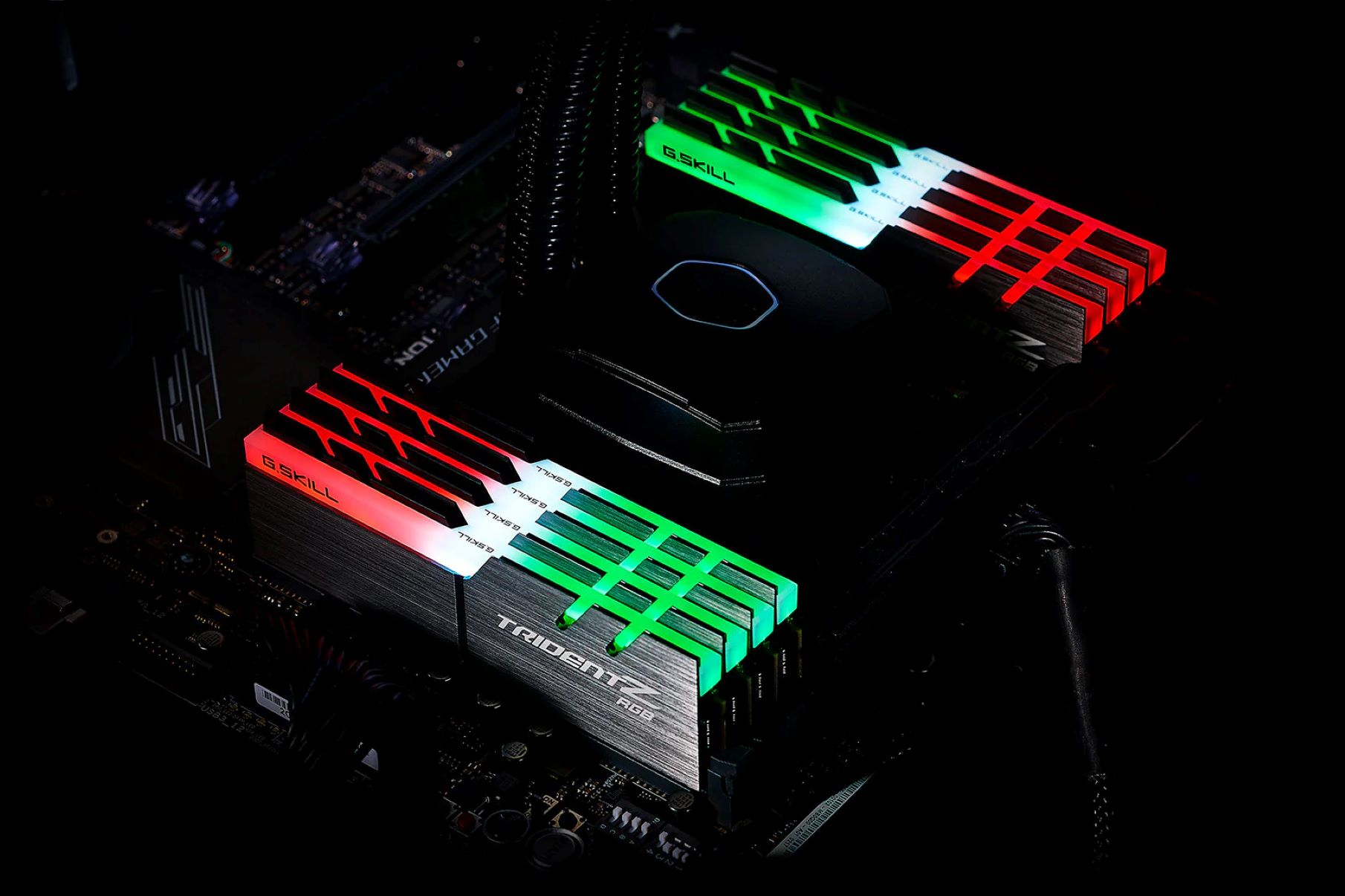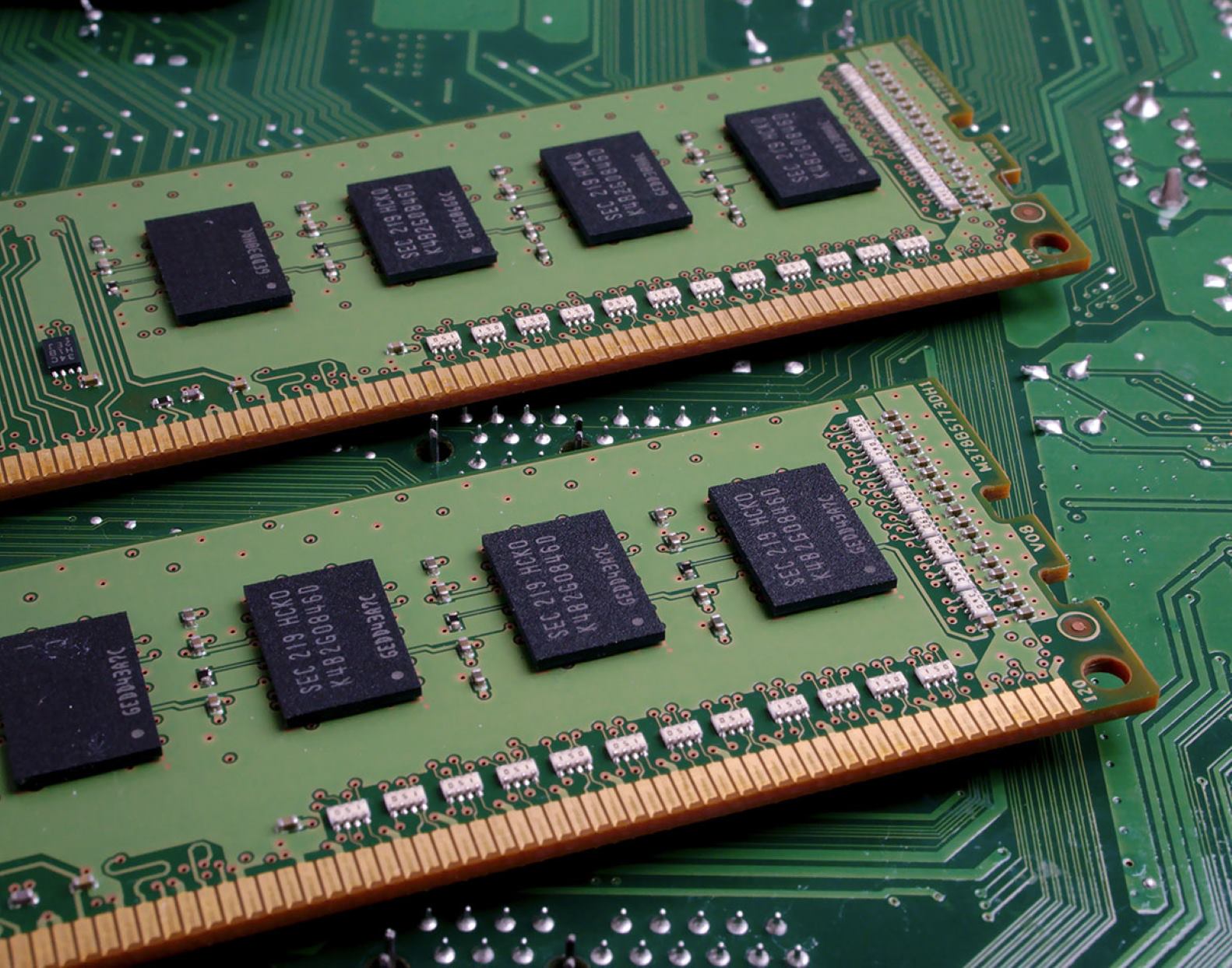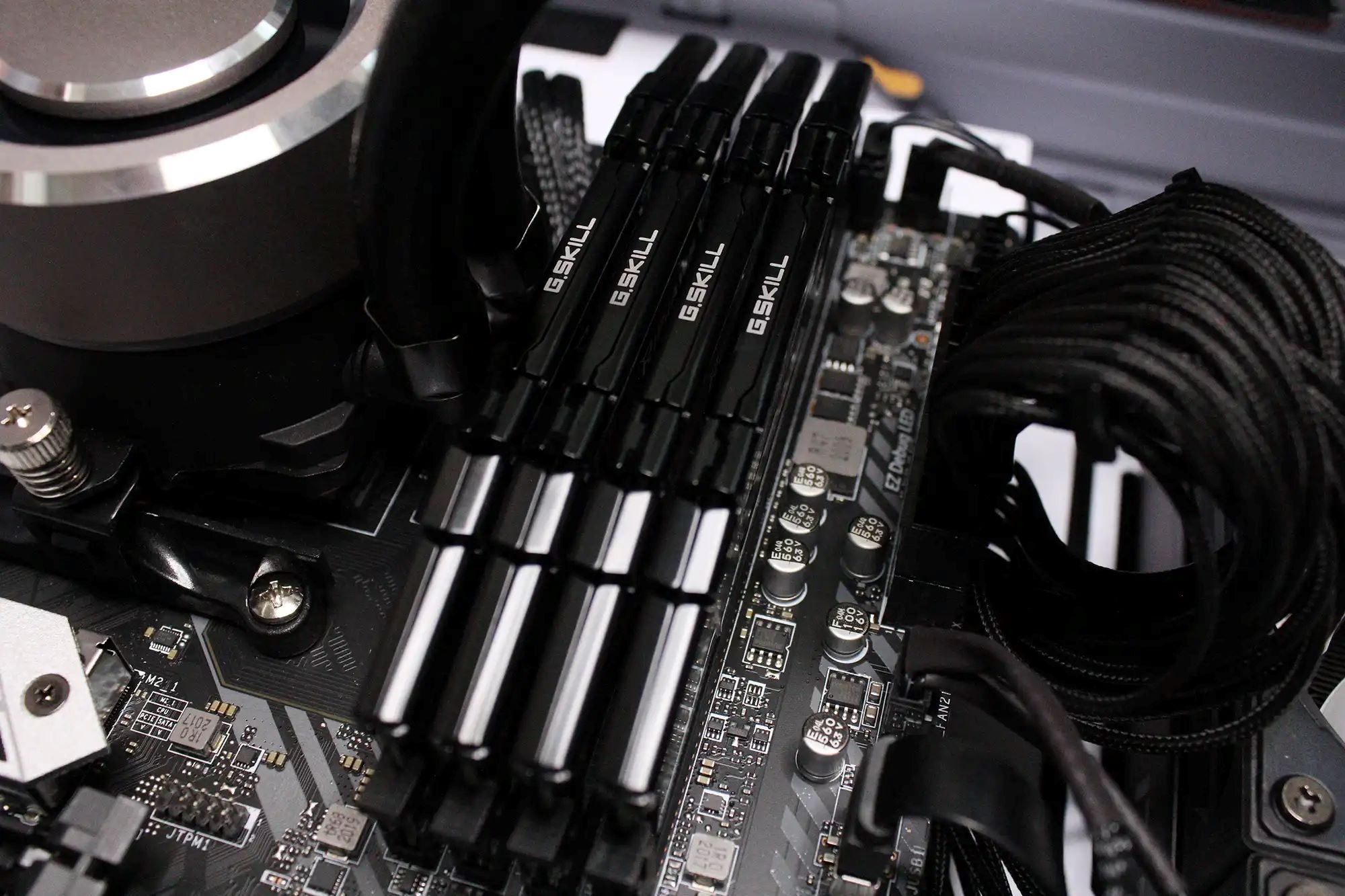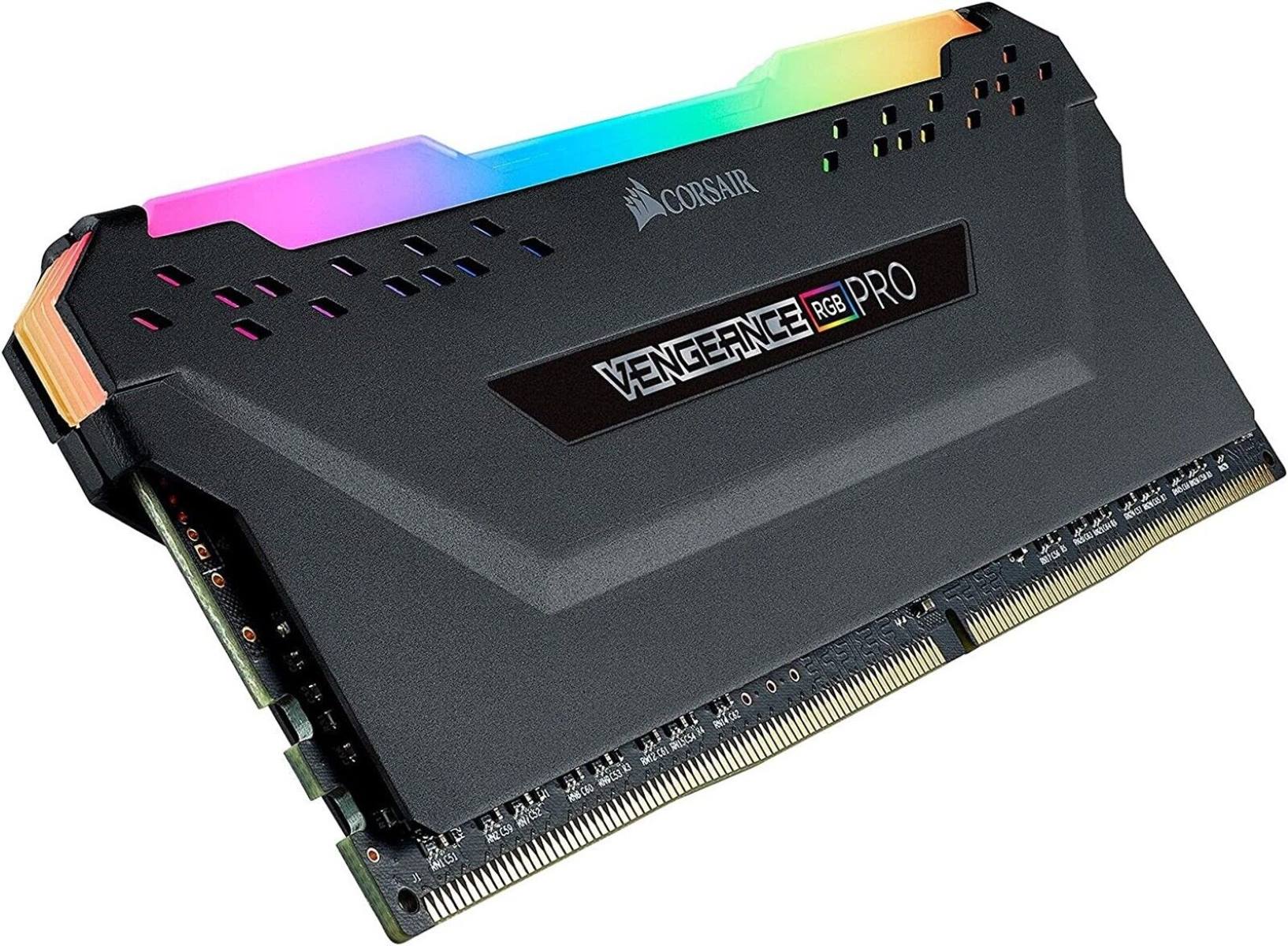Introduction
Welcome to the exciting world of DDR5 RAM! As technology continues to advance at an unprecedented pace, so too does the need for faster and more efficient memory solutions. DDR5 RAM, the next generation of DRAM technology, promises significant enhancements over its predecessor, DDR4 RAM. In this article, we will explore the key features, benefits, and expected release date of DDR5 RAM, along with its compatibility and upgrade options.
DDR5 RAM, short for Double Data Rate 5 Random Access Memory, represents a leap forward in memory performance. As the successor to DDR4 RAM, it aims to deliver faster data transfer rates, higher bandwidth, and improved power efficiency. With these improvements, DDR5 RAM is poised to revolutionize various sectors, including gaming, artificial intelligence, data centers, and more.
While DDR4 RAM has served us well in recent years, the demand for higher performance has driven the development of DDR5 RAM. The increased reliance on resource-intensive applications and the ever-growing volumes of data necessitate a memory solution that can keep up with these demands. DDR5 RAM aims to address this need by providing a significant boost in speed and efficiency, setting a new standard in memory technology.
Furthermore, DDR5 RAM boasts several key enhancements that make it an attractive option for tech enthusiasts and professionals alike. These improvements include higher memory capacities, improved reliability, better error correction capabilities, and advanced power management features. All of these factors contribute to a more efficient and stable system performance, ultimately enhancing the overall user experience.
As we delve deeper into the world of DDR5 RAM, we will explore its benefits, compare it to DDR4 RAM, delve into its features and specifications, and discuss the expected release date. Additionally, we’ll explore the compatibility and upgrade options for those who are considering making the switch from DDR4 to DDR5 RAM. So, buckle up and get ready to embark on this exciting journey to discover the future of computer memory technology!
Overview of DDR5 RAM
DDR5 RAM, the fifth generation of Double Data Rate Random Access Memory, is an advanced memory technology that aims to deliver higher performance and efficiency compared to its predecessor, DDR4 RAM. It offers several notable improvements that make it an appealing choice for various applications, including gaming, content creation, and data-intensive tasks.
One of the key highlights of DDR5 RAM is its faster data transfer rate. It utilizes a new clocking architecture that allows for higher speeds, enabling data to be accessed and transferred at lightning-fast rates. This results in improved overall system performance and responsiveness, making DDR5 RAM ideal for tasks that require quick data processing, such as gaming and multimedia editing.
In addition to its faster speed, DDR5 RAM also offers higher memory capacities. With the increasing demand for memory-intensive applications, such as virtual reality, artificial intelligence, and big data analytics, the ability to accommodate larger amounts of data becomes crucial. DDR5 RAM addresses this by supporting higher capacities, enabling users to run more demanding applications and workflows smoothly.
Moreover, DDR5 RAM incorporates advanced error correction capabilities, ensuring data integrity and reliability. It utilizes a more sophisticated error correction code (ECC) scheme, allowing for better detection and correction of errors. This is particularly essential in critical applications where data accuracy and consistency are paramount, such as scientific simulations and server environments.
In terms of power efficiency, DDR5 RAM introduces innovative features to optimize energy consumption. It includes voltage regulator modules (VRMs) that deliver power directly to the memory modules, allowing for more precise control and reduced power wastage. This results in improved power efficiency and lower energy consumption, which is not only beneficial for the environment but also for reducing operating costs in data centers.
Additionally, DDR5 RAM incorporates enhanced reliability features, such as on-die ECC and resilience against soft errors. These features help to ensure that data stored in the memory remains accurate and intact, even when exposed to external disturbances or radiation. This makes DDR5 RAM a reliable choice for applications that require high levels of data integrity and stability, such as financial transactions and scientific research.
In summary, DDR5 RAM brings significant advancements in speed, capacity, reliability, and power efficiency compared to its predecessor. Its faster data transfer rates, higher memory capacities, advanced error correction capabilities, and enhanced power management features make it an attractive choice for users seeking top-notch performance and reliability. In the next section, we will compare DDR5 RAM with DDR4 RAM to understand the differences between these two memory technologies.
Benefits of DDR5 RAM
DDR5 RAM offers a range of benefits that make it a compelling choice for users looking to upgrade their memory. From improved performance to enhanced power efficiency, DDR5 RAM brings several advantages over its predecessor and other memory technologies.
One of the key benefits of DDR5 RAM is its higher data transfer rates. With its improved clocking architecture, DDR5 RAM provides faster access to data, resulting in significantly improved system performance. This is particularly advantageous for tasks that involve high data processing requirements, such as gaming, video editing, and rendering. Users can expect smoother and more responsive performance, allowing for a seamless user experience.
In addition to faster data transfer rates, DDR5 RAM also delivers higher memory capacities. This means that users can take advantage of increased storage capabilities to handle resource-intensive applications. Whether it’s running virtual machines, managing large datasets, or working on graphics-intensive projects, DDR5 RAM provides the necessary headroom to handle demanding workloads without sacrificing performance or system stability.
Furthermore, DDR5 RAM introduces advanced error correction capabilities, ensuring reliable data storage and transmission. By utilizing more sophisticated error correction codes, DDR5 RAM can detect and correct errors more effectively than its predecessors. This helps in maintaining data integrity and reducing the risk of data corruption, making DDR5 RAM an excellent choice for critical applications that require high levels of accuracy and security.
Another notable benefit of DDR5 RAM is its enhanced power efficiency. With the incorporation of voltage regulator modules (VRMs), DDR5 RAM allows for more precise control of power delivery, reducing power consumption and minimizing wastage. This not only contributes to lower energy costs but also helps in reducing the overall carbon footprint. DDR5 RAM is an environmentally friendly choice for users who prioritize energy efficiency and sustainability without compromising performance.
In addition to these core benefits, DDR5 RAM also brings improvements in reliability and stability. With features like on-die ECC and resilience against soft errors, DDR5 RAM ensures that data remains accurate and protected, even in challenging environments. This makes it suitable for applications involving critical data storage and processing, such as financial transactions, scientific simulations, and enterprise-level data centers.
In summary, DDR5 RAM offers a range of benefits that significantly enhance system performance, reliability, power efficiency, and data integrity. With faster data transfer rates, higher memory capacities, advanced error correction capabilities, and enhanced power management features, DDR5 RAM provides users with a future-proof memory solution that can handle the demands of modern computing applications. The next section will compare DDR5 RAM with DDR4 RAM to help you understand the differences between these two memory technologies.
Comparison with DDR4 RAM
DDR5 RAM and DDR4 RAM are two distinct generations of memory technologies, each with its own set of advantages and performance characteristics. Understanding the differences between DDR5 RAM and DDR4 RAM can help users make informed decisions when it comes to upgrading their systems.
One of the major differences between DDR5 RAM and DDR4 RAM is the speed. DDR5 RAM offers significantly faster data transfer rates compared to DDR4 RAM. With its new clocking architecture and improved signaling technology, DDR5 RAM can achieve higher frequencies, resulting in faster and more efficient data processing. This means that tasks such as loading applications, multitasking, and data-intensive operations can be executed quicker with DDR5 RAM, leading to an overall smoother computing experience.
Another key difference between DDR5 RAM and DDR4 RAM is the memory capacity. DDR5 RAM supports higher memory capacities, allowing for larger amounts of data to be stored and accessed. This is particularly important in scenarios where users require extensive memory resources, such as running virtual machines, working with large datasets, or performing complex simulations. DDR5 RAM’s increased capacity ensures that users can handle these memory-intensive tasks without running into limitations or having to compromise performance.
In terms of power efficiency, DDR5 RAM has an advantage over DDR4 RAM. DDR5 RAM incorporates improved power management features, including voltage regulator modules (VRMs). These VRMs deliver power directly to the memory modules, resulting in more efficient power delivery and reduced wastage. This enables DDR5 RAM to operate with lower power consumption compared to DDR4 RAM, leading to energy savings and lower operating costs over time.
Furthermore, DDR5 RAM’s advanced error correction capabilities set it apart from DDR4 RAM. DDR5 RAM utilizes more advanced error correction codes, allowing for better detection and correction of data errors. This helps to ensure data integrity and reliability, which is crucial in fields where accuracy and consistency are paramount, such as scientific research, financial transactions, and data centers. DDR4 RAM also has error correction capabilities, but they are not as advanced as those found in DDR5 RAM.
While DDR5 RAM brings several improvements over DDR4 RAM, it’s important to note that compatibility with existing systems may be a consideration. DDR5 RAM requires a motherboard specifically designed to support this new memory technology. Upgrading to DDR5 RAM may involve replacing the motherboard and other components to ensure full compatibility. On the other hand, DDR4 RAM is widely supported by current motherboards, making it a more viable option for users who don’t want to undergo a complete system overhaul.
In summary, DDR5 RAM offers faster data transfer rates, higher memory capacities, improved power efficiency, and advanced error correction capabilities compared to DDR4 RAM. It provides users with a significant performance boost and enhanced stability, making it an attractive choice for those seeking the latest advancements in memory technology. However, it’s important to weigh the benefits against the compatibility requirements and cost considerations when considering a transition from DDR4 to DDR5 RAM.
Features and Specifications of DDR5 RAM
DDR5 RAM brings several noteworthy features and specifications that set it apart from its predecessor and other memory technologies. These advancements contribute to improved performance, increased capacity, enhanced reliability, and energy efficiency.
One of the key features of DDR5 RAM is its increased data transfer rates. DDR5 RAM utilizes a new clocking architecture and improved signaling technology to achieve higher frequencies. This allows for faster access to data and improved overall system performance. The higher data transfer rates enable quicker application loading, smoother multitasking, and faster data processing, making DDR5 RAM an excellent choice for demanding tasks such as gaming, content creation, and scientific simulations.
DDR5 RAM also offers higher memory capacities compared to DDR4 RAM. With support for larger capacity modules, users can take advantage of increased storage capabilities. This is particularly beneficial in scenarios where extensive memory resources are required, such as running multiple virtual machines, working with complex datasets, or performing data-intensive calculations. The availability of higher capacities ensures that users can handle these memory-intensive tasks without encountering limitations or sacrificing performance.
Another noteworthy aspect of DDR5 RAM is its enhanced error correction capabilities. DDR5 RAM utilizes more advanced error correction codes (ECC) to detect and correct data errors. This helps to maintain data integrity and reliability, reducing the risk of data corruption and ensuring accurate results. In applications where accuracy and consistency are critical, such as financial transactions and scientific research, DDR5 RAM’s improved error correction capabilities provide an added layer of data protection and stability.
DDR5 RAM incorporates power management features that contribute to improved energy efficiency. The inclusion of voltage regulator modules (VRMs) allows for more precise control of power delivery to the memory modules. This results in optimized power consumption and reduced power wastage, leading to energy savings and lower operating costs over time. DDR5 RAM’s power efficiency makes it an environmentally friendly choice that benefits both users and the planet.
Furthermore, DDR5 RAM introduces on-die ECC, an advanced error correction mechanism that reduces latency and overhead associated with traditional ECC. This feature improves the efficiency of error correction, allowing for faster and more reliable data processing. DDR5 RAM is also designed to be more scalable, providing future-proofing capabilities for evolving memory requirements and emerging technologies.
In terms of physical specifications, DDR5 RAM features a different form factor compared to DDR4 RAM. The module design and pin layout of DDR5 RAM have been revised to accommodate the increased data transfer rates and higher capacities. As a result, DDR5 RAM modules are not backward compatible with DDR4 RAM slots, requiring a motherboard specifically designed for DDR5 RAM support.
Overall, the features and specifications of DDR5 RAM contribute to its superior performance, increased capacity, enhanced reliability, and energy efficiency. The higher data transfer rates, larger memory capacities, advanced error correction capabilities, power management features, and scalability make DDR5 RAM an appealing choice for users seeking the latest advancements in memory technology.
Expected Release Date of DDR5 RAM
The release of DDR5 RAM has been highly anticipated in the tech industry, with enthusiasts and professionals eagerly awaiting its arrival. While DDR5 RAM has been in development for several years, the expected release date has recently become more definitive.
The initial projections suggested that DDR5 RAM would become commercially available around 2020. However, due to various factors, including the complexity of the technology and the need for extensive testing, the release timeline was pushed back. It is now expected that DDR5 RAM will start hitting the market in 2021.
The exact release date of DDR5 RAM may vary depending on the specific manufacturers and their production schedules. Companies such as Samsung, SK Hynix, and Micron, who are leading producers of memory modules, have announced their plans to release DDR5 RAM in the near future. This indicates that the transition from DDR4 to DDR5 RAM is imminent.
Initially, DDR5 RAM is expected to be primarily available for server platforms and enterprise environments, where the demand for high-performance memory solutions is particularly high. These sectors rely heavily on data processing, virtualization, and cloud computing, making DDR5 RAM an attractive upgrade option.
For consumer applications, the availability of DDR5 RAM for gaming and other personal computing needs may take a bit longer. It typically takes some time for manufacturers to release consumer-grade DDR5 RAM modules that are compatible with the latest motherboards and processors. However, with the growing demand for faster and more efficient memory solutions, it is anticipated that DDR5 RAM will become accessible to the consumer market within a couple of years after its initial release.
It’s worth noting that the transition from DDR4 to DDR5 RAM may require users to upgrade their systems, as DDR5 RAM is not backward compatible. Users will likely need to invest in new motherboards that support DDR5 RAM, along with compatible processors and other components, to fully utilize the benefits of this next-generation memory technology.
In summary, DDR5 RAM is expected to be released in 2021, initially targeting server platforms and enterprise environments. The availability for consumer applications may follow in the subsequent years, with compatible motherboards and processors becoming more widely available. As DDR5 RAM becomes more accessible, users will have the opportunity to upgrade their systems and embrace the improved performance and efficiency of this advanced memory technology.
Compatibility and Upgrade Options
When considering an upgrade to DDR5 RAM, it is important to assess compatibility and explore the available options to ensure a smooth transition. DDR5 RAM introduces a new memory standard, which means that it requires compatible hardware to function properly.
DDR5 RAM is not backward compatible with DDR4 RAM or other previous generations. Therefore, upgrading to DDR5 RAM will likely involve replacing the motherboard and potentially other components, such as the processor. DDR5 RAM requires a motherboard that is specifically designed to support this new memory technology. It is important to verify the compatibility of your existing system before making the decision to upgrade.
Given the expected release of DDR5 RAM in 2021, it is also necessary to consider the availability of compatible hardware. Initially, DDR5 RAM modules may be limited to certain high-end platforms, particularly for server and enterprise applications. However, as time progresses, compatibility and availability for consumer-grade systems are anticipated to expand.
When selecting a DDR5-compatible motherboard, it is advisable to choose one from reputable manufacturers who have a track record of providing reliable and high-quality hardware. Consulting with PC builders or experts in the field can also provide valuable insights and recommendations regarding compatible motherboards that suit your specific needs.
In terms of upgrade options, there are a few potential scenarios to consider. If you are in the process of building a new system from scratch, choosing a motherboard that supports DDR5 RAM from the beginning will provide a future-proof platform for upgrades and ensure compatibility with this new memory technology.
However, if you already have a DDR4-based system and are considering an upgrade to DDR5 RAM, there are a couple of factors to keep in mind. As mentioned earlier, transitioning to DDR5 RAM will likely involve replacing the motherboard, which may also require replacing the processor due to socket compatibility. Additionally, you may need to consider other components, such as power supply and cooling solutions, to accommodate any changes or increased power requirements.
It is important to consider the cost-benefit analysis of upgrading to DDR5 RAM based on your specific needs and budget. While DDR5 RAM offers significant performance and efficiency improvements, the costs associated with upgrading the entire system should be taken into account. Evaluating your usage requirements, computing needs, and budget constraints will help determine whether an upgrade to DDR5 RAM is a worthwhile investment at this time.
In summary, upgrading to DDR5 RAM requires the consideration of compatibility and available options. DDR5 RAM is not backward compatible with DDR4 RAM, necessitating the replacement of the motherboard and potentially other components. Understanding the availability of DDR5-compatible hardware and considering the cost-benefit analysis will help determine the feasibility and timing of an upgrade to DDR5 RAM.
Price and Availability of DDR5 RAM
As the release of DDR5 RAM approaches, the price and availability of this next-generation memory technology are important factors to consider for users looking to upgrade their systems. However, it is essential to note that specific pricing details may vary depending on various factors, such as market conditions, product demand, and manufacturer pricing strategies.
Initially, DDR5 RAM modules are expected to have a higher price compared to DDR4 RAM due to the new technology and increased performance capabilities. The early adoption phase and limited availability of DDR5 RAM may contribute to higher costs. Additionally, the requirement for a compatible motherboard and potentially other system upgrades can also factor into the overall cost of transitioning to DDR5 RAM.
As DDR5 RAM becomes more widely adopted and production ramps up, it is anticipated that the prices will gradually decrease over time, similar to how DDR4 RAM prices have evolved over the years. Market competition and advancements in manufacturing processes are likely to drive down the costs of DDR5 RAM modules, making them more affordable for a broader range of users.
In terms of availability, DDR5 RAM will initially be targeted towards server platforms and enterprise environments, where the demand for high-performance memory is critical. The availability for consumer-grade systems may be more limited in the early stages. However, as compatibility expands and motherboard manufacturers begin offering DDR5-compatible options for consumer systems, the availability of DDR5 RAM for the consumer market is expected to increase.
It is important to keep an eye on reputable hardware manufacturers and retailers for the release and availability of DDR5 RAM modules. Companies such as Samsung, SK Hynix, and Micron are expected to be key players in the production and distribution of DDR5 RAM. Checking their official websites and staying informed through technology news sources can provide updates on the availability and pricing of DDR5 RAM.
When considering the price and availability of DDR5 RAM, it is also crucial to balance the cost with the perceived benefits and individual needs. Assessing the performance requirements, budget constraints, and compatibility of your existing system will help determine the optimal time for an upgrade to DDR5 RAM.
In summary, the initial availability of DDR5 RAM may come with a higher price tag due to the new technology and increased performance capabilities. However, as the technology matures and production increases, DDR5 RAM prices are expected to decrease over time. Availability may initially be focused on server platforms and enterprise environments, with consumer-grade options becoming more accessible in subsequent years. Considering the cost implications and aligning them with individual needs and budget constraints will help determine the most suitable time for upgrading to DDR5 RAM.
Pros and Cons of Upgrading to DDR5 RAM
Upgrading to DDR5 RAM offers several potential benefits, but it is essential to consider the pros and cons before making the decision. Evaluating these factors will help determine if upgrading to DDR5 RAM is the right choice for your specific needs and circumstances.
Pros:
1. Enhanced Performance: DDR5 RAM offers faster data transfer rates and improved overall system performance compared to DDR4 RAM. This translates to quicker application loading times, smoother multitasking, and faster data processing, especially for resource-intensive tasks like gaming, content creation, and data analysis.
2. Increased Memory Capacities: DDR5 RAM supports higher memory capacities, allowing for larger amounts of data to be stored and accessed. This is particularly advantageous for applications that require extensive memory resources, such as virtual machines, complex simulations, and working with large datasets.
3. Future-Proofing: DDR5 RAM introduces new features and specifications that make it a more future-proof memory solution. With advancements in error correction capabilities, reliability features, power efficiency, and scalability, DDR5 RAM provides a platform for handling evolving memory requirements and emerging technologies.
Cons:
1. Cost: Upgrading to DDR5 RAM may involve significant costs, including purchasing new compatible motherboards, processors, and potentially other components. DDR5 RAM modules may also initially have a higher price compared to DDR4 RAM due to the new technology and limited availability.
2. Compatibility: DDR5 RAM is not backward compatible with previous generations of RAM, meaning it requires a compatible motherboard and other hardware components. Upgrading to DDR5 RAM may necessitate a system overhaul, potentially including the replacement of the motherboard, CPU, and other components.
3. Limited Availability: In the early stages of DDR5 RAM’s availability, the options may be limited to specific platforms and applications. It may take some time for DDR5-compatible hardware to become widely accessible, particularly for consumer-grade systems.
4. Timing and Utilization: The decision to upgrade to DDR5 RAM should be carefully considered based on individual needs and timing. If your current system adequately meets your performance requirements and you do not require the latest advancements in memory technology, it may be more cost-effective to wait until DDR5 RAM becomes more mainstream and affordable.
Considering the pros and cons of upgrading to DDR5 RAM will help you make an informed decision. Assessing factors such as performance needs, budget constraints, compatibility requirements, and the anticipated lifespan of your current system will determine if upgrading to DDR5 RAM is the right choice for you.
Conclusion
DDR5 RAM represents the next evolution in memory technology, offering significant improvements in performance, capacity, reliability, and power efficiency compared to its predecessor, DDR4 RAM. The release of DDR5 RAM is highly anticipated, with its expected arrival in 2021.
With faster data transfer rates, higher memory capacities, advanced error correction capabilities, and enhanced power management features, DDR5 RAM provides users with a future-proof memory solution that can handle the demands of modern computing applications. It is particularly beneficial for tasks that require quick data processing, such as gaming, content creation, and data-intensive workloads.
However, the decision to upgrade to DDR5 RAM should be carefully considered based on individual needs and circumstances. Factors such as compatibility, cost, availability, and the timing of the upgrade should be weighed against the perceived benefits. It is important to evaluate if the performance gains and improvements in efficiency justify the associated costs and potential need for system upgrades.
Overall, DDR5 RAM brings substantial advancements to the realm of computer memory technology. As DDR5 RAM becomes more accessible and compatible options become available for consumer-grade systems, users will have the opportunity to benefit from its enhanced capabilities. Whether it’s for gaming, professional applications, or future-proofing your system, DDR5 RAM sets a new standard for memory performance and efficiency.
So, as you weigh the pros and cons, consider your specific requirements, and stay informed about the availability and pricing of DDR5 RAM. If the timing is right, upgrading to DDR5 RAM can provide a significant boost in performance and unleash the full potential of your system.







